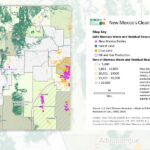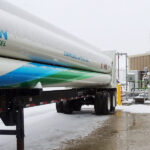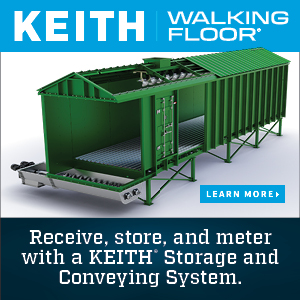Mechanical and hydraulic techniques are used to break open packaged feedstocks and separate them from the organic material.
Peter Gorrie
BioCycle September 2015
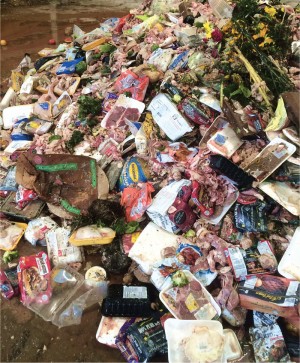
Biogas Energy Partners accepts packaged food waste from food processors, retailers and institutions. A depackaging unit installed in July is designed to process 150 tons/day.
The trends toward banning organic wastes from landfills, and corporate zero waste policies, are creating a growing source of energy-rich feedstock for anaerobic digester and composting facility operators. But the opportunity comes with a challenge.
Spoiled, expired or mislabelled products from food processing plants, grocery stores, restaurants and municipal waste streams often arrive at facilities in metal, plastic, coated paper or glass packaging that must be removed before the organic contents can be digested or composted. One solution to dealing with this tangled mass is depackaging equipment, which, using a variety of mechanical and hydraulic techniques, breaks open the containers, then separates them from the organic material. Big and expensive, they are suited only to high-volume operations. While depackaging machines have been common in Europe for years, North American operators are still getting accustomed to them.
In general, the systems employ a hopper and conveyor or auger to move the feedstock into a shredder or screw press. Once separated, the organic fraction may undergo further preprocessing and, perhaps, mixing with manure, liquids or other “clean” feedstock prior to digestion or composting. The packaging, sometimes removed with magnets or blowers, is directed into a container for recycling, incineration or landfilling.
Biogas Energy Partners
Depackaging is a major component of ambitious expansion plans at Stonyvale Farm in Exeter, Maine’s second largest dairy operation. Adam Wintle, a member of the family that has owned the farm for five generations, began six years ago to investigate the potential for installing an anaerobic digester to process manure from 1,000 head of dairy cows. With siblings John and Sarah, and through an operating company called Biogas Energy Partners, he installed a facility that could produce more than enough biogas to fuel a 1.5-megawatt (MW) generator.
The farm’s biogas and generation capacity has since been doubled to 3 MW, under a 20-year contract with Maine’s renewable energy program that pays a fixed rate for electricity supplied to the state grid. A second contract allows expansion to an additional 6 MW of capacity. That growth could be achieved by setting up another facility at Maine’s largest dairy farm, Flood Brothers, 30 miles away in Clinton, where the herd totals 3,900 head. In total, the two farms produce about 150,000 tons of manure annually.
But the manure doesn’t provide enough energy for biogas generation, Wintle says. An equal amount of food waste, with its higher energy content, must be added. To ensure a consistent supply, the farm acquired a depackager, housed in a new 60- by 140-foot building. Packaged food waste is accepted from food processors, retailers and institutions. Another Wintle company, Agri-Cycle Energy, trucks in these feedstocks from sources such as Wal-Mart, Whole Foods, the Hannaford grocery chain, Boston General Hospital and the Boston World Trade Center.
The depackaging unit, commissioned in July, has a throughput of up to 150 tons/day, but is currently operating at less than 50 tons/day, processing mostly packaged organics from grocery stores, Wintle says (he declined to disclose the manufacturer). “We’re still playing with it,” he explains. “There are certain parameters that can be adjusted, which allows you to manipulate the system to accommodate a variety of materials. It’s quite versatile.”
Like most digester operators, Biogas Energy Partners doesn’t like to receive products packaged in glass, which is hard on the equipment and difficult to remove from the organic stream. “If there are a dozen glass bottles in a load, that’s not a big deal,” Wintle notes. “But we wouldn’t take a trailer load.”
Depackaged organics are pumped to an existing underground tank where they are heated, mixed with other feedstock(s) and metered into the digester. “You end up with a thick slurry that occasionally needs additional water,” he adds. “It works well with our existing system.”
The fate of the packaging itself is “a work in progress,” Wintle says. The aim is to recycle as much as possible, particularly if the facility gets a large load of cans or other consistent, saleable material. Otherwise, it will be shipped to an energy-from-waste facility.
As for competition for the feedstock, “today it’s uncharted ground,” he notes. “We’re now one of very few that can manage packaged food wastes. I expect that the competition will grow exponentially over time.”
With no landfill bans in most of the collection region, waste generators must be convinced that creating a separate organics stream costs the same, or less than, traditional disposal, he adds. The “environmental story” is another strong selling point, along with helping generators set up efficient systems for handling organic wastes. The main choice, largely dependent on available space, is whether employees put packaged wastes into onsite compacters or toss them into totes along with clean organics.
Bio-En Power, Inc.
In the village of Woolwich, in southwestern Ontario, Earl Brubacher also relies on depackaging equipment to supply food waste to the digester he manages for Bio-En Power, Inc. The facility produces enough biogas to fuel a 2.85-MW generator, which produces electricity sold to the provincial grid. “We spent a lot of time and money travelling Europe, seeking out the right piece of depackaging equipment,” he says, noting he is pleased with its performance, handling up to 77,000 tons/year of packaged food waste.
Incoming material is dumped into a pit, then, metered into the system with an auger. Current feedstock is a mix of food industry wastes and residential source separated organics collected through municipal Green Bin programs. About 40 percent of the material are liquids that arrive in tanker trucks. Everything else goes through the depackager.
Feedstock from the food industry is relatively predictable. But the Green Bin materials include a variety of contaminants, even a trailer hitch and the flywheel from a car’s transmission, Brubacher says. The depackager survived both.
The depackager, which cost about $1 million, can manage small amounts of organics packaged in glass but the facility won’t accept trailer loads. Tin cans can also be a problem, he adds. Small amounts arrive regularly and are manageable, but “if we got two trailer loads at one time it would be a challenge to get the throughput we need.”
Most of the packaging and other contaminants, which amounts to five to 10 percent of the original feedstock, go to landfill, Brubacher notes. “We can’t recycle. Everything is commingled, from metal to glass to different plastics. It’s not worthwhile chasing that.”
Ontario has only two digester facilities with depackagers — the other is at Seacliff Energy Corp., on the northwest shore of Lake Erie — and is unikely to get more, he says. The big tonnage for organics in the province is from residential collections, for which depackaging isn’t essential. And there’s not a lot of potential for expanding in commercial food wastes, Brubacher adds. “We’re handling all that’s available. Grocery stores are not out to make a lot of waste. Food processors don’t want to produce a bad batch. It’s a fluke thing if it does happen.”
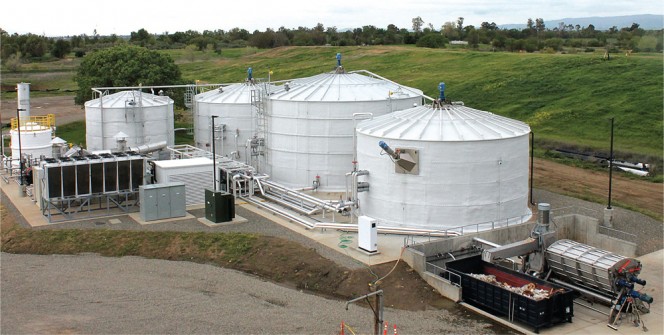
A CleanWorld digester installed at the University of California in Davis has a DODA bioseparator (on right) to separate out contaminants in the food scraps stream.
Cleanworld
In California, CleanWorld utilizes DODA depackagers at two of its high-solids, high-rate anaerobic digestion facilities in the Sacramento area. The facility located at Sacramento’s South Area Transfer Station, was commissioned in January 2013. It began with a capacity of 22 tons/day but has been expanded to 100 tons/day. Since there are few residential organics collection programs in the area, most of its feedstock comes from grocery stores, restaurants and other commercial sources. The majority of biogas generated at the digester is upgraded to biomethane, which helps to fuel waste collection trucks operated by Atlas Disposal and Republic. Services.
The CleanWorld facility at the University of California, Davis was commissioned in December 2013 and has a daily capacity of 50 tons. It processes all of the campus organics, augmented by about 7,000 tons annually from the food and agriculture industries. Its biogas fuels a generator that supplies four percent of the campus’ electricity.
“At our sites with DODA equipment we only accept feedstocks that can be put through the bioseparator,” says Kathryn Chapman, CleanWorld’s applications engineer. The equipment handles most packaging, but doesn’t do well with glass, Styrofoam or some plastics that can get tangled in the auger and “need to be cut off on a regular basis,” Chapman notes. “If loads have too high a level of glass or Styrofoam we don’t accept them. On the other hands, the depackager does really well with cans and plastic bottles.” CleanWorld aims to recycle as much of the packaging and other contaminants as possible, particularly with large, uniform loads such as organics in PVC bottles, she adds.
The company “is exploring” expansion into municipal solid waste, but that would require new depackagers from a different source. The DODA system has proven to be robust and problem-free, but processing MSW would require “a system that could handle a wider range of materials.”
Peter Gorrie is a Contributing Editor to BioCycle.



